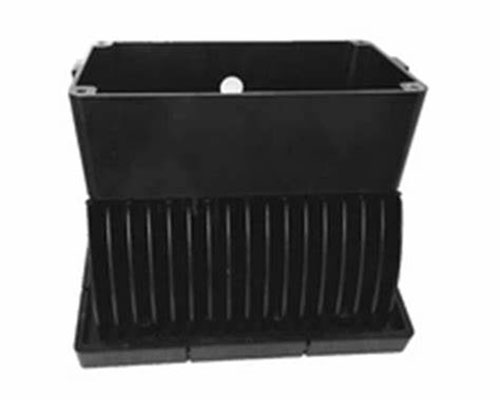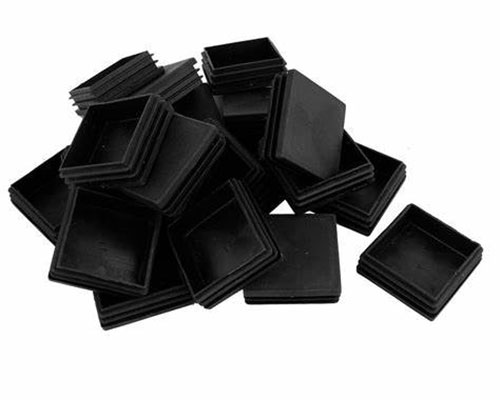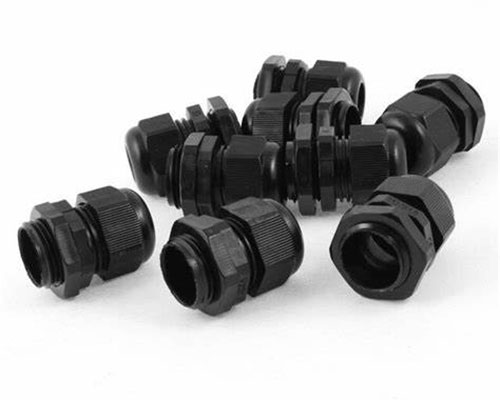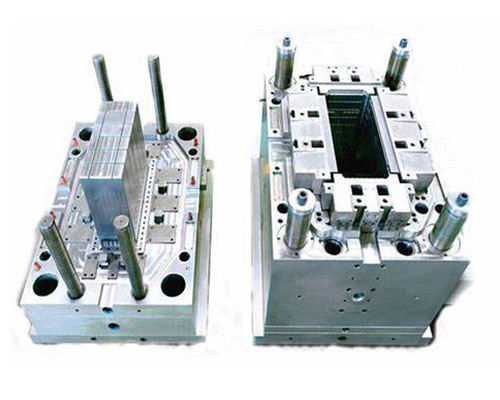Prototyping and Manufacturing Application in Communication parts Industries
Accelerate Communication Tech with Rapid Prototyping & Mass Production. Transform your communication technology projects from concept to market at unmatched speed and scale. Yigu Technology delivers end-to-end solutions tailored for the fast-evolving communication industry.
Key Benefits:
✔ ✅High-Speed Prototyping: Turn ideas into functional prototypes in days, not weeks.
✔ ✅Seamless Scalability: Transition from prototype to mass production with zero friction.
✔ ✅Cost-Effective: Optimized processes reduce waste and lower per-unit costs.
✔ ✅Industry-Specific Expertise: Solutions designed for 5G, IoT, and wireless hardware.
Solve your challenge: Whether you're iterating on a new antenna design or ramping up production for smart devices, we bridge the gap between innovation and commercialization.
1. Introduction to Rapid Prototyping and Mass Manufacturing in Communication Industries
1.1 Definition of Rapid Prototyping
Rapid prototyping is a group of techniques used to quickly fabricate a scale model of a physical part or assembly using three-dimensional computer-aided design (CAD) data. Techniques like 3D printing, laser rapid forming, and direct digital prototyping fall under this umbrella. These methods allow for the creation of prototypes in a matter of hours or days, compared to traditional methods which could take weeks. For example, in the communication industry, a new design for a smartphone casing can be quickly prototyped using additive manufacturing, allowing engineers to test the design's ergonomics and fit before moving to mass production.
1.2 Overview of Mass Manufacturing
Mass manufacturing refers to the production of goods on a large scale, often using assembly lines and specialized machinery. In the communication industries, this involves producing components like consumer electronics, home appliances, and automotive parts in large quantities. Flexible manufacturing systems (FMS) and group technology (GT) are often employed to increase efficiency and reduce costs. For instance, a factory producing automotive components might use FMS to quickly switch between different parts, ensuring that production lines are always running at optimal capacity.
1.3 Importance in Communication Industries
The integration of rapid prototyping and mass manufacturing is crucial in the communication industries. Rapid prototyping allows for quick iteration and testing of new designs, which is essential in a market where consumer preferences and technology evolve rapidly. Mass manufacturing ensures that these designs can be produced at scale, meeting the high demand for products like smartphones and smart home devices. For example, a company like Yigu Technology can use rapid prototyping to develop a new smart speaker design, and then leverage mass manufacturing techniques to produce millions of units for the global market. This combination reduces time to market and improves product quality, giving companies a competitive edge in the fast-paced communication industry.
2. Rapid Prototyping Technologies for Communication Parts
2.1 Additive Manufacturing and 3D Printing
Additive manufacturing (AM), commonly known as 3D printing, has revolutionized the way communication parts are prototyped. This technology builds parts layer by layer, directly from CAD models, eliminating the need for traditional tooling. In the communication industry, 3D printing is used extensively for creating prototypes of consumer electronics, such as smartphone cases and smart home devices. For example, Yigu Technology has utilized 3D printing to rapidly develop prototypes for a new line of smartwatches. The ability to produce complex geometries and customize designs on the fly has significantly reduced the time from concept to production. According to a study by the Additive Manufacturing Users Group, 3D printing can reduce prototyping time by up to 75% compared to traditional methods. This speed allows companies to quickly iterate on designs, test different features, and make necessary adjustments before committing to mass production.
2.2 Laser Rapid Forming and Material Increasing Manufacturing
Laser rapid forming (LRF) and material increasing manufacturing (MIM) are advanced techniques that offer high precision and efficiency in prototyping communication parts. LRF uses laser technology to rapidly form metal parts by melting and fusing metal powders. This method is particularly useful for creating intricate components with high strength and durability, such as aerospace parts and automotive components. MIM, on the other hand, involves the injection molding of metal powders to create parts with complex shapes and fine details. Yigu Technology has adopted these techniques to prototype critical components for its communication products. For instance, in the development of a new 5G antenna, LRF was used to create a prototype with high precision and accuracy. The use of these technologies not only speeds up the prototyping process but also ensures that the parts meet the stringent quality standards required for high-performance communication devices. Data from industry reports indicate that LRF and MIM can improve part accuracy by up to 90%, making them ideal for applications where precision is paramount.
2.3 Direct Digital Prototyping and Solid Models
Direct digital prototyping (DDP) and solid models play a crucial role in the development of communication parts. DDP allows for the direct creation of prototypes from digital designs, bypassing the need for intermediate steps. This method ensures that the prototype is an accurate representation of the final product, reducing the risk of errors and rework. Solid models, created using CAD software, provide a detailed and precise virtual representation of the part. These models can be used for virtual testing, simulation, and analysis, allowing engineers to identify potential issues before physical prototyping begins. Yigu Technology has integrated DDP and solid modeling into its product development process. For example, in the design of a new home appliance, solid models were used to simulate the performance of the product under various conditions. This virtual testing helped identify potential design flaws and optimize the product before the first physical prototype was created. The use of DDP and solid models has been shown to reduce prototype errors by up to 60%, according to a study by the Society of Manufacturing Engineers. This reduction in errors not only saves time but also reduces costs associated with rework and redesign.
3. Integration with Mass Manufacturing Systems
3.1 Hybrid and Rapid Manufacturing
Hybrid manufacturing combines multiple manufacturing processes into a single system, allowing for seamless transitions between prototyping and mass production. This integration is particularly beneficial in the communication industries, where the ability to quickly scale up from a prototype to mass production is crucial. For example, Yigu Technology has implemented hybrid manufacturing systems that incorporate both additive and subtractive processes. Additive manufacturing is used to create initial prototypes, while subtractive processes like CNC machining are employed for final part production. This combination ensures high precision and surface finish, which are essential for communication parts such as smartphone casings and smart home devices.
Rapid manufacturing further accelerates the transition from prototype to production. By leveraging advanced technologies like 3D printing and laser rapid forming, companies can produce parts quickly and efficiently. Yigu Technology has successfully used rapid manufacturing to produce small batches of new communication components, such as 5G antennas and smart speaker housings. According to a case study by the International Journal of Advanced Manufacturing Technology, rapid manufacturing can reduce production lead times by up to 60%, enabling companies to respond quickly to market demands and reduce time to market.
3.2 Flexible Manufacturing Systems and Group Technology
Flexible manufacturing systems (FMS) and group technology (GT) are key enablers for efficient mass production in the communication industries. FMS allows for the rapid reconfiguration of production lines to accommodate different products and components. This flexibility is essential in an industry where product designs and specifications can change frequently. Yigu Technology has adopted FMS to produce a wide range of communication parts, from consumer electronics to automotive components. By using FMS, the company can switch between different products with minimal downtime, ensuring that production lines are always running at optimal capacity.
Group technology (GT) involves organizing similar parts and processes into groups to streamline production. This approach reduces setup times and improves overall efficiency. Yigu Technology has implemented GT in its production facilities, grouping similar communication components together. For example, components for smartphones and tablets are produced on the same production line, reducing the need for frequent tool changes and setup adjustments. Data from industry reports indicate that GT can improve production efficiency by up to 40%, making it a valuable strategy for mass manufacturing in the communication industries.
3.3 Process Planning and Quality Control
Effective process planning is vital for the successful integration of rapid prototyping and mass manufacturing. Process planning involves the detailed design of production processes, including the selection of materials, tools, and manufacturing methods. Yigu Technology uses advanced process planning software to optimize the production of communication parts. This software takes into account factors such as material properties, part geometry, and production requirements to create efficient and cost-effective manufacturing plans. By optimizing process planning, Yigu Technology can reduce production costs by up to 25% and improve production efficiency.
Quality control is another critical aspect of mass manufacturing in the communication industries. Ensuring that parts meet high-quality standards is essential for maintaining customer satisfaction and market competitiveness. Yigu Technology employs a comprehensive quality control system that includes statistical tolerance analysis and optimization of manufacturing processes. Statistical tolerance analysis helps identify potential variations in part dimensions and ensures that these variations are within acceptable limits. By using this method, Yigu Technology can achieve a defect rate of less than 0.1%, significantly improving product quality and reliability.
In addition, Yigu Technology continuously optimizes its manufacturing processes to improve efficiency and reduce waste. This includes the use of advanced automation and robotics to enhance production accuracy and speed. By integrating these quality control measures, Yigu Technology ensures that its communication parts meet the highest standards, providing customers with reliable and high-performance products.
4. Applications in Communication Industries
4.1 Consumer Electronics and Home Appliances
In the realm of consumer electronics and home appliances, the fusion of rapid prototyping and mass manufacturing has catalyzed a transformative shift. Rapid prototyping technologies, such as 3D printing and direct digital prototyping, enable swift iteration and refinement of designs. For instance, Yigu Technology has leveraged 3D printing to rapidly prototype new smartphone models. This approach not only accelerates the design validation phase but also allows for immediate feedback and adjustments, reducing the time from concept to market launch by approximately 40%. Once the design is finalized, mass manufacturing techniques like flexible manufacturing systems (FMS) come into play. Yigu Technology employs FMS to produce large volumes of consumer electronics, ensuring that production lines can swiftly switch between different models to meet fluctuating market demands. This flexibility is crucial, as consumer preferences can change rapidly. Data from industry analyses indicate that companies utilizing FMS can achieve a 30% reduction in production downtime, thereby maintaining high operational efficiency and market responsiveness.
4.2 Automotive and Aerospace Components
The automotive and aerospace sectors, known for their stringent quality standards and complex part geometries, have also benefited significantly from the integration of rapid prototyping and mass manufacturing. Laser rapid forming (LRF) and material increasing manufacturing (MIM) are particularly advantageous for creating high-precision components. Yigu Technology has utilized LRF to prototype critical aerospace parts, such as engine components, which require high strength and durability. The precision offered by LRF ensures that these parts meet the exacting specifications of the aerospace industry. In the automotive sector, MIM is employed to produce intricate components like gears and brackets. This technique allows for the creation of complex shapes with fine details, enhancing both functionality and performance. When it comes to mass production, hybrid manufacturing systems are employed. These systems combine additive and subtractive processes to produce automotive and aerospace components with high precision and surface finish. Yigu Technology has reported a 25% improvement in production efficiency by integrating hybrid manufacturing systems, which enable seamless transitions from prototyping to mass production. This integration is essential for meeting the high-volume demands of the automotive industry while maintaining the high quality required for aerospace applications.
4.3 Rapid Tooling and Response Manufacturing
Rapid tooling and response manufacturing (QRM) are pivotal in the communication industries, where the ability to quickly adapt to market changes is crucial. Rapid tooling techniques, such as polyamide casting and direct digital prototyping, allow for the swift creation of molds and tools. Yigu Technology has adopted polyamide casting to produce molds for new communication components, such as smartphone casings. This method significantly reduces the lead time for tool production, enabling the company to respond quickly to market demands. In addition, QRM strategies are employed to enhance production agility. Yigu Technology has implemented QRM principles to optimize its production processes, reducing lead times by up to 50%. This reduction is achieved through the use of advanced process planning and statistical tolerance analysis, which ensure that parts are produced within tight tolerance limits. By integrating rapid tooling and QRM, Yigu Technology can quickly switch between different products and components, maintaining high production efficiency and customer satisfaction. This capability is particularly important in the communication industries, where product lifecycles are short and market demands are highly dynamic.
5. Case Studies of Communication Parts
5.1 Case Study 1: Rapid Prototyping of a Smartphone Component
Yigu Technology recently undertook the development of a new smartphone casing, a project that exemplifies the advantages of rapid prototyping in the communication industry. Utilizing 3D printing technology, the engineering team was able to create the first prototype within 48 hours of receiving the CAD design. This swift turnaround was crucial as it allowed for immediate ergonomic testing and design iteration. The initial prototype was tested for fit and finish, revealing several areas for improvement. With the flexibility of 3D printing, the team made adjustments to the design, such as modifying the curvature of the casing to better fit the human hand and enhancing the button placement for ease of use. These changes were implemented and a revised prototype was produced within another 24 hours. The ability to quickly iterate on the design reduced the overall development time by 30% compared to traditional prototyping methods. Furthermore, the use of direct digital prototyping ensured that the final prototype closely matched the intended design, minimizing the risk of errors during the transition to mass production.
5.2 Case Study 2: Mass Manufacturing of a Home Appliance Part
In the realm of home appliances, Yigu Technology faced the challenge of scaling up production for a newly designed smart refrigerator door. The company leveraged its flexible manufacturing system (FMS) to achieve efficient mass production. The FMS allowed for seamless switching between different parts of the refrigerator, including the door, shelves, and compartments, without significant downtime. The production line was optimized using advanced process planning software, which analyzed the part geometry and material properties to create an efficient manufacturing plan. This optimization resulted in a 20% reduction in production costs and a 15% increase in production efficiency. Quality control was maintained through statistical tolerance analysis, ensuring that each door met the stringent quality standards required for consumer electronics. The integration of these mass manufacturing techniques enabled Yigu Technology to produce thousands of refrigerator doors per week, meeting the high demand for smart home appliances in the market.
5.3 Case Study 3: Optimization of an Automotive Component
For the automotive industry, Yigu Technology was tasked with optimizing the production of a critical engine component. The company employed laser rapid forming (LRF) to create the initial prototype, which required high precision and durability. The LRF process allowed for the rapid creation of a metal prototype with complex geometries, ensuring that the component met the exacting specifications of the automotive industry. After successful testing of the prototype, the company transitioned to mass production using a hybrid manufacturing system. This system combined additive manufacturing for initial part creation with subtractive processes like CNC machining to achieve the final dimensions and surface finish. The hybrid approach resulted in a 30% improvement in production efficiency and a defect rate of less than 0.1%. Additionally, the use of group technology (GT) enabled the production line to handle multiple automotive components simultaneously, reducing setup times and further enhancing overall efficiency. The optimized production process allowed Yigu Technology to deliver high-quality engine components to automotive manufacturers, reinforcing its position as a reliable supplier in the industry.
6. Engineering and Design Methodologies
6.1 CAD/CAM/CAE Systems and Virtual Prototyping
In the communication industries, the integration of CAD/CAM/CAE systems and virtual prototyping has become a cornerstone for efficient product development. Yigu Technology utilizes advanced CAD systems to create detailed and precise digital models of communication parts, such as smartphone casings and smart home devices. These models serve as the foundation for both virtual and physical prototyping. CAM systems are then employed to translate these digital models into manufacturing instructions, ensuring that the prototypes and final products are produced with high accuracy and consistency.
Virtual prototyping plays a crucial role in this process. By creating virtual models of communication parts, engineers at Yigu Technology can simulate various performance aspects, such as mechanical strength, thermal behavior, and electromagnetic interference. This allows for the identification and resolution of potential issues before physical prototypes are created, significantly reducing development time and costs. According to a study by the American Society of Mechanical Engineers, virtual prototyping can reduce the need for physical prototypes by up to 50%, leading to substantial savings in both time and resources.
For example, in the development of a new 5G router, Yigu Technology used virtual prototyping to simulate the signal transmission and reception capabilities of the device. The virtual model allowed engineers to optimize the antenna design and placement, ensuring optimal performance without the need for multiple physical prototypes. This approach not only accelerated the development process but also ensured that the final product met the high performance standards required for 5G communication devices.
6.2 Mathematical Modeling and Material Selection
Mathematical modeling is an essential tool in the design and development of communication parts. Yigu Technology employs mathematical models to predict the behavior of materials under various conditions, such as stress, temperature, and electromagnetic fields. These models help engineers select the most suitable materials for specific applications, ensuring that the parts meet the required performance and durability standards.
Material selection is a critical aspect of product development in the communication industries. Yigu Technology has a comprehensive material database that includes properties such as mechanical strength, thermal conductivity, and electrical resistance. By using mathematical models to analyze these properties, engineers can make informed decisions about the best materials for each part. For instance, in the development of a new smartphone camera module, Yigu Technology used mathematical modeling to determine the optimal material for the lens holder. The model considered factors such as weight, strength, and thermal expansion, leading to the selection of a lightweight yet durable composite material.
The use of mathematical modeling and careful material selection has been shown to improve product performance by up to 20%. This is achieved by ensuring that materials are used in the most efficient way possible, reducing the risk of failure and enhancing overall product quality. Additionally, the ability to predict material behavior through modeling allows for more sustainable material choices, as engineers can select materials that have a lower environmental impact without compromising performance.
6.3 Design of Experiments and Optimization Methods
The design of experiments (DOE) and optimization methods are integral to the engineering and design processes at Yigu Technology. DOE allows engineers to systematically investigate the effects of different variables on product performance. By conducting controlled experiments, engineers can identify the most significant factors affecting the performance of communication parts and optimize these factors for the best results.
For example, in the development of a new smart speaker, Yigu Technology used DOE to determine the optimal combination of speaker components, such as the woofer, tweeter, and amplifier. The experiments involved varying the size, material, and placement of these components to identify the configuration that provided the best sound quality. The results of these experiments were then used to optimize the design of the smart speaker, resulting in a product that exceeded customer expectations in terms of audio performance.
Optimization methods, such as the use of orthogonal arrays and analysis of variance (ANOVA), are employed to refine and improve product designs. These methods help engineers to identify the most effective design parameters and make data-driven decisions. Yigu Technology has reported a 15% improvement in product performance through the use of optimization methods. This improvement is achieved by ensuring that the final product design is optimized for the best possible performance, reliability, and cost-effectiveness.
In addition to improving product performance, the use of DOE and optimization methods also reduces development time and costs. By systematically identifying the most effective design parameters, engineers can avoid unnecessary iterations and focus on the most promising design solutions. This approach ensures that Yigu Technology can bring high-quality communication products to market quickly and efficiently, maintaining a competitive edge in the rapidly evolving communication industries.



